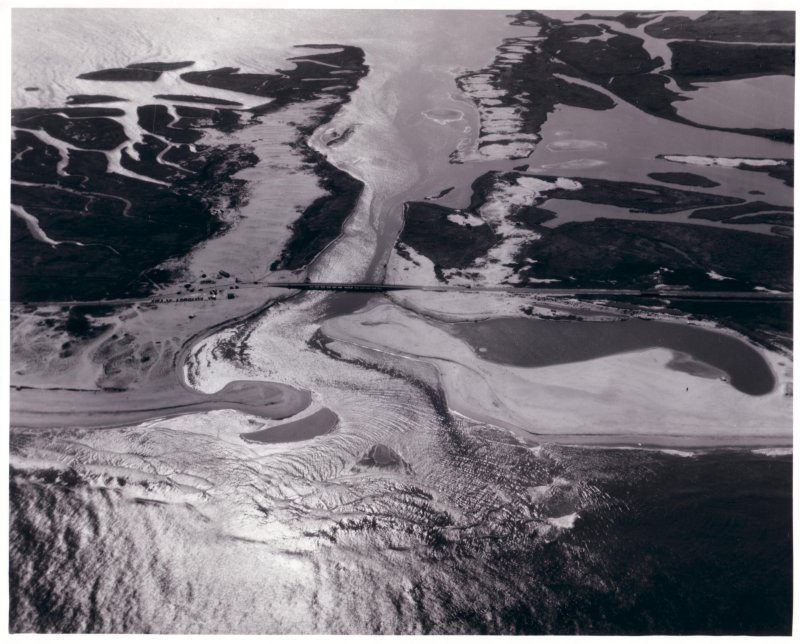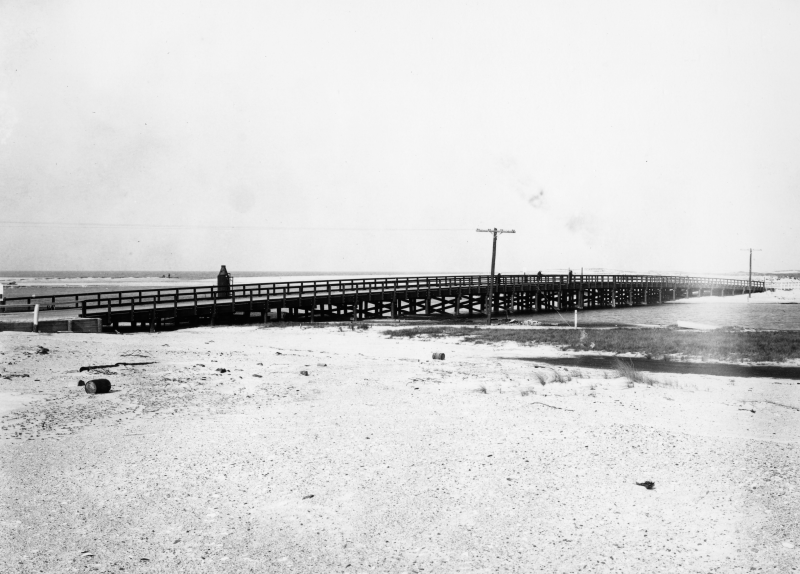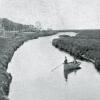The Dead Sea of Delaware
A headline from June 27, 1925, reads, “No money for Rehoboth Bay.” The story that followed outlined the desire to create what is now the Indian River Inlet. Prior to being established in a permanent location in 1928, the inlet was a natural waterway that shifted up and down the coast between today’s Dewey Beach and Bethany Beach. By 1925, the inlet had naturally closed, which ostensibly had a significant impact on fish and crabs in the bays.
A May 28, 1928 article in the Evening Journal blamed the issue on the creation of the Assawoman and Lewes-Rehoboth canals: “These two canals sucked the waters from the two bays, removed the pressure of the tide water from the small inlet and caused sand to seep into the channel.”
The article says the inlet closed four times, but Mother Nature eventually reopened it each time. But a long drought eventually resulted in a closure Mother Nature couldn’t overcome.
A request for government aid to open the inlet was made to save fish and crabs. The condition was considered “deplorable” in the article, saying many fish were dying due to the lack of saltwater.
The Indian River Inlet was finally set to be permanently established in 1928. The May 28, 1928, headline reads “Indian River called Dead Sea of Delaware, reclaimed, will thrive.”
“The Dead Sea of Delaware is to live again,” the article says. “After a losing battle with the elements, the imprisoned and stagnated waters of the Indian River Bay in Sussex County are to be released.”
The effort was the result of much work by farmers, fishermen, factory workers and residents of Delaware. Eventually, their campaign resulted in the creation of the Indian River Bay Commission, with $40,000 provided to open a channel 50 feet wide and 4 feet deep at low tide. But, as often happens, problems arose.
Work to create the inlet was abandoned due to lack of funding.
A temporary solution was conceived a short time later. Aided by experts from the DuPont Company, a ton of dynamite was used to blast open the clogged channel to allow water to flow back and forth between the Atlantic Ocean and the bay. According to an article in The Morning News, 2,200 pounds of dynamite was placed in 80 holes in an area 20 feet by 200 feet. The result was a geyser of water and sand rising at least 100 feet in the air.
Former Gov. John G. Townsend Jr. pressed the button that let loose the explosions. Reportedly, more than 800 people arrived to witness the event. Just a few weeks later, in November 1928, The Morning News reported that the inlet was blocked by sand again and that no additional work would occur to reopen the inlet until the legislature and the Indian River Bay Commission could meet.
However, a group of men who had been deprived of their living by the closing of the inlet banded together to form a volunteer association. They agreed to finish the work by hand. They were aided by Gov. C.D. Buck, who secured a “digging machine” to help the group clear out the sand.
The inlet finally opened May 1, 1929.
To keep the inlet open, dredging took place until 1938. That’s when the U.S. Army Corp of Engineers built jetties to hold the inlet opening in place. According to newspaper accounts of the day, the large rocks for the jetties were transported to the Cape Region via railroad.
Treasure seekers rushed to the area in September 1938 after word got out that people were digging around the inlet. Hundreds of people showed up looking to get rich quick, but it turned out to be government engineers probing a shipwreck to see if it was obstructing water flow at the inlet channel.
People lined the banks of the new channel Dec. 9, 1938, to watch a 125-foot yacht named Vidette sail through the inlet on a final inspection trip. It also served as a ceremonial opening of the waterway, as Sen. John G. Townsend Jr., State Highway Commission Chairman Charles W. Cullen, Delaware Senate President Pro Tem Wilmer Steele, state Sen. Harold W.T. Purnell and other dignitaries were aboard the Vidette. Following their trip through the inlet, the waterway was officially opened to the public for navigation.
Nearly a century later, the state continues to deal with issues at the Indian River Inlet. The jetties continually cause problems on the ocean beaches, as the southern jetty blocks the natural movement of sand, resulting in a shortage of sand on the north side. Several beach nourishments have occurred in recent years, especially after the Atlantic Ocean broke through the dunes on more than one occasion, and the state finally has a bypass system operating to pump sand from the south side to the north beach.
Nick Roth is the news editor. He has been with the Cape Gazette since 2012, previously covering town beats in Milton and Lewes. In addition to serving on the editorial board and handling page layout, Nick is responsible for the weekly Delaware History in Photographs feature and enjoys writing stories about the Cape Region’s history. Prior to the Cape Gazette, Nick worked for the Delmarva Media Group, including the Delaware Wave, Delaware Coast Press and Salisbury Daily Times. He also contributed to The News Journal. Originally from Boyertown, Pa., Nick attended Shippensburg University in central Pennsylvania, graduating in 2007 with a bachelor’s degree in journalism. He’s won several MDDC awards during his career for both writing and photography. In his free time, he enjoys golfing, going to the beach with his family and cheering for Philadelphia sports teams.





















































